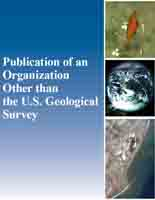The bottomless bucket (BB) approach (Nimmo et al., 2009a) is a cost-effective method for rapidly characterizing field-saturated hydraulic conductivity Kfs of soils and alluvial deposits. This practical approach is of particular value for quantifying infiltration rates in remote areas with limited accessibility. A similar approach for bedrock outcrops is also of great value for improving quantitative understanding of infiltration and recharge in rugged terrain. We develop a simple modification to the BB method for application to bedrock outcrops, which uses a non-toxic, quick-drying silicone gel to seal the BB to the bedrock. These modifications to the field method require only minor changes to the analytical solution for calculating Kfs on soils. We investigate the reproducibility of the method with laboratory experiments on a previously studied calcarenite rock and conduct a sensitivity analysis to quantify uncertainty in our predictions. We apply the BB method on both bedrock and soil for sites on Pahute Mesa, which is located in a remote area of the Nevada National Security Site. The bedrock BB tests may require monitoring over several hours to days, depending on infiltration rates, which necessitates a cover to prevent evaporative losses. Our field and laboratory results compare well to Kfs values inferred from independent reports, which suggests the modified BB method can provide useful estimates and facilitate simple hypothesis testing. The ease with which the bedrock BB method can be deployed should facilitate more rapid in-situ data collection than is possible with alternative methods for quantitative characterization of infiltration into bedrock.


